 Balloon Fight is a classic Nintendo arcade game that was later ported to the NES and released in 1985 in North America as one of Nintendo’s earliest titles for the system.
Balloon Fight is a classic Nintendo arcade game that was later ported to the NES and released in 1985 in North America as one of Nintendo’s earliest titles for the system.
In the game you play as a unanimous “balloon rider” (later re-named “Balloon Man” with the Game & Watch version and available as a trophy in Super Smash Bros. Melee as simply “Balloon Fighter”) who must fly around a static stage and dispose of various other balloon riding enemies. The goal of the game is simply to score as many points as possible and keep play going from stage to stage as you pop the balloons of your opponents.
The game is very similar to Midway’s Joust, but has that classic Nintendo feel that you get from other arcade games of this nature like Donkey Kong, Ice Climber and Mario Bros. And like those games the control and physics in Balloon Fight are spot on and make the game feel polished.
So how does it stack up in 2008, and better yet, is it worth downloading for the Wii Virtual Console?
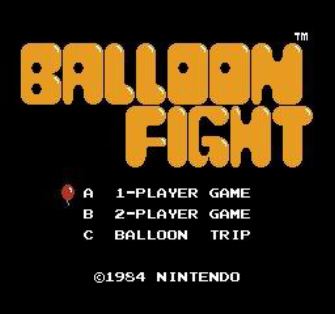
System: NES
Also On: Arcade, Game & Watch, Game Boy Advance E-Reader, GameCube (as a playable game in Animal Crossing), Wii Virtual Console (doesn’t include Japanese releases)
RELEASE DATES
NES – USA June 1986 – EUR December 15, 1986 – JAP January 22, 1985
GameCube (Animal Crossing) – USA September 15, 2002 – EUR September 24, 2004 – AUS October 17, 2003 – JAP December 14, 2001
Wii Virtual Console – USA July 16, 2007 – EUR June 8, 2007 – JAP November 2007
Genre: Arcade Action
Players: Two Players
Save: None in the NES original. Saves high scores in Animal Crossing.
Wii Point Cost: 500 Points or $5 to buy from the Wii Virtual Console.
Developer: Nintendo
Publisher: Nintendo
Origin: Japan
Rated: E for Everyone (No content descriptors)
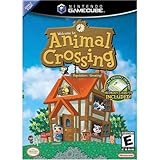 Balloon Fight is as simplistic as can be but can also be really fun, especially if you are the type of person who loves to go for high scores, beat your own scores or compete for high scores, although you must be careful on what version you play because the original doesn’t save your high scores. The version I reviewed, unlockable in the GameCube game Animal Crossing, WILL save your high scores. I don’t know at this moment if the Wii Virtual Console version saves high scores, once I find out I will update the review.
Balloon Fight is as simplistic as can be but can also be really fun, especially if you are the type of person who loves to go for high scores, beat your own scores or compete for high scores, although you must be careful on what version you play because the original doesn’t save your high scores. The version I reviewed, unlockable in the GameCube game Animal Crossing, WILL save your high scores. I don’t know at this moment if the Wii Virtual Console version saves high scores, once I find out I will update the review.
As mentioned above, in Balloon Fight you play as a character who is suspended by two balloons, these allow him to “fly”, or rather “float”, through the air. You press the A Button to make him float and you keep pressing it to “pump” his arms and make him float up a bit. Doing this repeatedly lets you soar throughout the stage. Alternatively, you can hold the B Button to fly easier. You can think of the A Button as Manual and B Button as automatic. The A Button gives you more control but the B Button is easier and lets you fly faster.
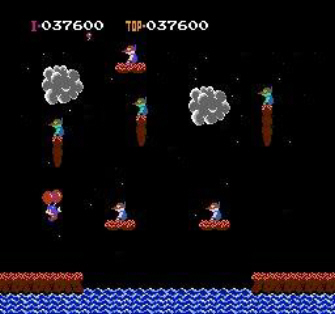
There are three ways to play Balloon Fight. A, B, and C. A Game is the single-player portion, B Game is the two-player mode and C Game is a special mini-game called “Balloon Trip”.
In the main game, there will be several enemies floating around a stage that contains platforms you can walk on, storm clouds (that will occasionally release lightning that kills you in one hit) and occasionally other objects such as a “Flipper”, which spins and will bounce you off it if you touch it (it also replaced the “Bumper” from Super Smash Bros. 1 for N64 in the GameCube sequel Super Smash Bros. Melee) and columns that hang down from platforms to get in your way, as well as various sized platforms. Below the platforms on the floor and usually in the middle of the stage is water, this is what the enemies fall into when you stomp on them. And if you aren’t careful and get too close to the uncovered water in the middle, a big fish will pop out and eat you whole! So stay away from the dangerous waters!
Depending on the stage, you will face multiple spikey-nosed human-like enemies who float on two balloons of their own. In order to beat the stage you need to pop their balloons. You do so by hitting them from above with your feet. If you touch their sides you bounce off them, and if they touch your balloons then they will pop. If they pop both of your balloons you will lose a life. Your lives are represented as balloons in the upper-right-hand corner.
After you play a couple of levels you will reach a fun bonus stage, in which balloons will come floating out of several pipes. The color of the balloons depends on how many stages you have complete. Your bonus stage score will depend on how many balloons you pop. Pop them all to obtain a perfect score and get additional bonus points.
That’s really all there is to Balloon Fight, although what you can’t gain through reading text is just how fun, addictive and impressive Balloon Fight is. It’s fun and addictive in the same way other arcade classics like Pac-Man and Donkey Kong are, and it’s impressive simply due to how great the game controls. There is also a lot of strategy to be had depending on how you go about destroying the enemies. As you destroy them, they will fall into the water and a bubble will come floating up. Pop that bubble for extra points, but if you take longer, you risk dying because lightning will start coming out of the clouds, and if you hit it you die in one hit. The enemies also float down on a parachute after you pop their balloons, and popping them while floating down (before they hit the ground) will net you more points. If you let them hit the ground, they will reblow their balloons and be stronger and faster, but killing them will give you more points than before. There is also strategy in deciding whether you want to wait for the bubbles to come up (it takes a little while) after destroying an enemy, or to simply kill them all which will immediately take you to the next level (but you wont’ be rewarded with those extra points you would’ve gotten if you waited and destroyed the bubbles).
The control is spot-on in this game much like in Super Mario Bros. There is a fine line between learning how to press the A Button faster to make your player rise and pressing it while holding right or left to make them move in that direction. He will also raise higher or lower depending how you press or tap the button with each pump of his arms. It’s also fun and worth figuring out the differences between the A and B Buttons. The Button makes him float faster but he doesn’t pump the same as he does with the A Button. Using both buttons is recommended, depending on the situation.
It’s fun because the enemies are constantly pumping their own arms to float around the level, and they will also bounce of the sides of the environments, walk if they land on a platform (just as you can) and bump off of each other. They even can be eaten by the fish if they get too close to the water. This keeps you pumping and strategically falling like a mad-man so that you both avoid oncoming enemies (which can come from all sides, even above) and take them out if you see an opportunity to do so.
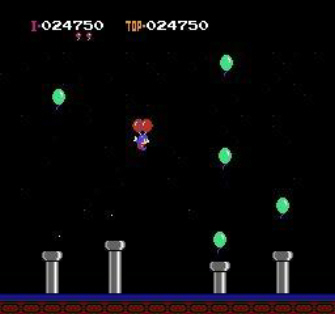
In addition, you can play a madly fun multiplayer co-op mode in the Two Player game. This game is hilariously fun with another player because while you are “supposed” to help each other out by helping to pop the enemies balloons, you can also pop each other’s balloons. If you pop the other players balloons, it will give that player points that they will keep when you move on to the next level, which will happen when all enemies are defeated, regardless of which player survives.
Finally, there is a really fun mini-game called “Balloon Trip” in the C Game. This mode is like a scrolling shooter . . . without bullets of course. The screen automatically scrolls to the left and you must avoid points of lightning which either stay static or move in various directions. What makes this mode so fun is, once again, the physics and the way you are able to float around with pin-point accuracy, allowing a good player to barely avoid close encounters of the electric kind and allowing you to slide in through small gaps. Naturally, throughout the scrolling stage there are balloons to catch which will increase your score. But watch out cause one hit from electricity and you are done for! No extra lives in this mode! In addition, there monstrous fish also inhabits the water in this mode, so don’t get too close or your fish meat! After a while of scrolling, the screen will stop to give you a brief rest, before it takes off again. The scrolling is endless, and thus this is my personal favorite mode because it’s very fun to compete with your friends for the best high score, or simply to beat your own.
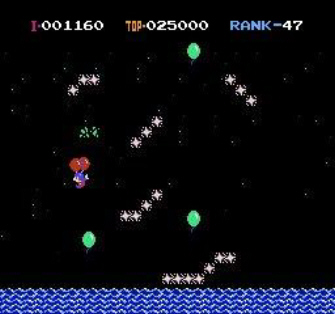
All in all, Balloon Fight is an excellent example of the great fun that can be had with early NES/arcade titles. The game is fun in the same way as Pac-Man is. You want to keep trying and keep competing for the high score. But it’s even funner than Pac-Man if you have a second player, as you are bound to eventually pop each others balloons, whether on purpose or on “accident”. You must keep in mind however that the game is an arcade game. So if you are a player who doesn’t care about high scores, then you most likely will not be too keen on this game, who’s early, primitive gameplay won’t hold your attention for very long.
Naturally, there is no story, no cut-scenes, no great graphics and no elaborate soundtrack, but what’s here is great if you know what you are in for. Graphically it’s as primitive as they come, but the funny way the characters flap their arms is sure to interest the ladies, and the soundtrack is a nice collection of early Nintendo greatness. The sound effects are also interesting as there is a completely different sound for every action in the game, from the enemies blowing up their own balloons to the “crash” sound of a balloon popping.
If you want to experience classic arcade gameplay with a Nitendo touch at it’s finest, and you already own or have played Mario Bros. and Donkey Kong, then you could do no wrong with Balloon Fight.
Should I download Balloon Fight for the Wii Virtual Console?
 The easiest way to get ahold of this game is to simply purchase it from the Wii Virtual Console, at a cost of 500 Points ($5 US dollars), which isn’t a lot but there are other games that are much more substantial that you could purchase for the same amount, such as Super Mario Bros. 2, Super Mario Bros. 3, The Legend of Zelda, Castlevania or Metroid. So only get Balloon Fight if you are prepared for an arcade, Pac-Man style game that is simplistic, played for high scores, and fun in short bursts but probably won’t hold your attention for hours at a time.
The easiest way to get ahold of this game is to simply purchase it from the Wii Virtual Console, at a cost of 500 Points ($5 US dollars), which isn’t a lot but there are other games that are much more substantial that you could purchase for the same amount, such as Super Mario Bros. 2, Super Mario Bros. 3, The Legend of Zelda, Castlevania or Metroid. So only get Balloon Fight if you are prepared for an arcade, Pac-Man style game that is simplistic, played for high scores, and fun in short bursts but probably won’t hold your attention for hours at a time.
The game is also available via the GameCube game Animal Crossing, where it is an NES title that you will eventually be able to get. That version also saves your high scores. The NES original DOES NOT save your high scores. The Wii version may, if it doesn’t, then the Animal Crossing version is definitely the best version to get. If you already have the game in Animal Crossing, then the only reason it can be recommended is if you want to be able to play it without having to pop in your game of Animal Crossing.
 There is also a version of Balloon Fight that was released for the E-Reader Game Boy Advance accessory. It was released as a five-card NES pack called Balloon Fight-e. It can be played by scanning all five cards while the e-reader is connected to your Game Boy Advance. However given the trouble you have to go through to even play the game, the fact that it doesn’t save your high scores, and the trouble it takes to actually get ahold of a copy of Balloon Fight-e, this is the least recommendable option, unless you only have a Game Boy Advance. The game is also available, naturally, as a standalone NES cartridge. But that version doesn’t save high scores and given that it’s on the NES, it’s much easier to simply download it for the Wii, where you don’t have to worry about the game freezing on you or not playing due to the NES hardware.
There is also a version of Balloon Fight that was released for the E-Reader Game Boy Advance accessory. It was released as a five-card NES pack called Balloon Fight-e. It can be played by scanning all five cards while the e-reader is connected to your Game Boy Advance. However given the trouble you have to go through to even play the game, the fact that it doesn’t save your high scores, and the trouble it takes to actually get ahold of a copy of Balloon Fight-e, this is the least recommendable option, unless you only have a Game Boy Advance. The game is also available, naturally, as a standalone NES cartridge. But that version doesn’t save high scores and given that it’s on the NES, it’s much easier to simply download it for the Wii, where you don’t have to worry about the game freezing on you or not playing due to the NES hardware.
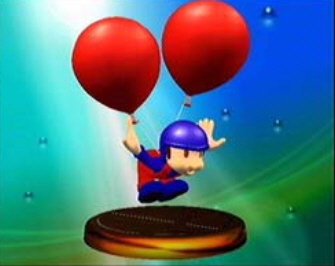
FUN FACTOR: 8.0
Balloon Fight is a fun game. No two ways about it. Even in this year of modern games, Balloon Fight has the arcade-style charm that you simply cannot deny. The game may not last you very long, but you’ll have a fun time popping balloons, trying to best your high score (or that of your buddies) and making your way through the awesome Balloon Trip mode. Definitely one of the best games of this type, if you ask me.
Graphics: 6.0
Do not play this game for graphics. Having said that, the characters animate well, the physics are impressive, as are the tight controls, and the game certainly has it’s own level of charm. However all the enemies look the same and the game is as simplistic as can be. But that should be expected.
Music & Sound: 7.5
The music is Pac-Man style given it’s arcade roots, but the game has some amazingly catchy tunes (which were good enough to put as remixes in the Super Smash Bros. games) and the sound effects are terrific and spot-on.
Ingenuity: 7.0
Although the game was clearly “inspired” by Joust, the game has a feel all it’s own, and the controls and “physics” of your Balloon Fighter are very impressive for the day, so much so that I imagine they had to have been copied by other games.
Replay Value: 7.0
This game has replay value in the traditional sense, beating high scores! If you don’t want to go after high scores, then don’t play this game as you’ll probably get bored within an hour or two (or less). But if you want . . . this game could go on forever, as you will always want to try to beat your high score, and in that sense, it can offer almost limitless replay value. But in all likelihood, you will play it for a few hours, and then fire it up every now and then for fun or if you have a short amount of time to get some balloon popping gaming in, or if you have friends over and are craving for some arcade classic action.

